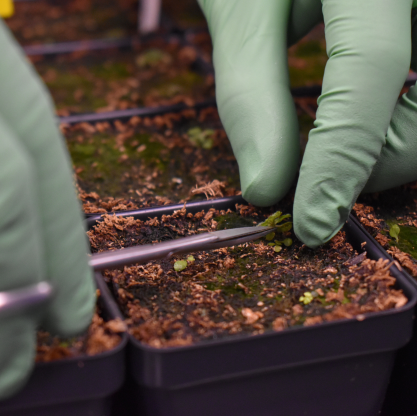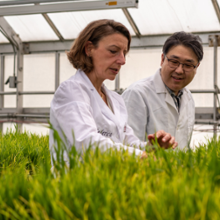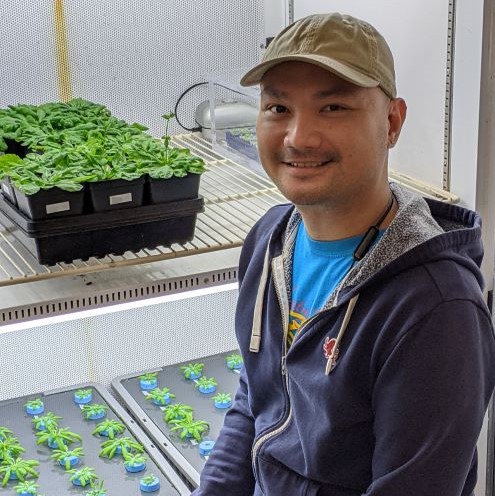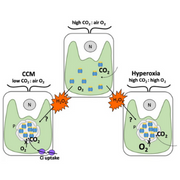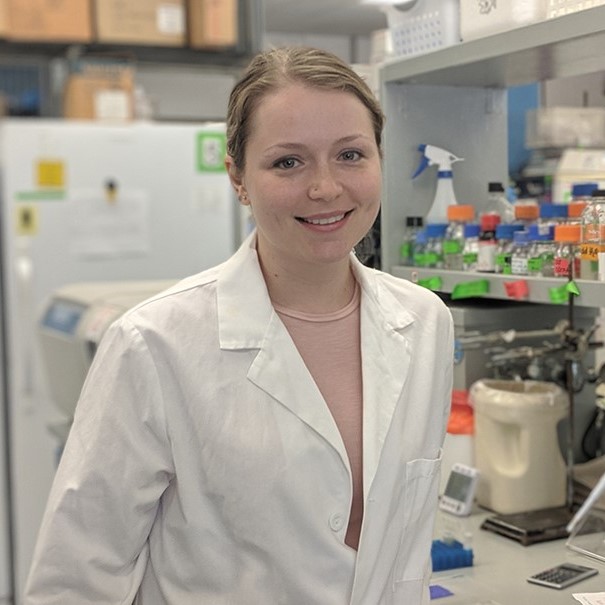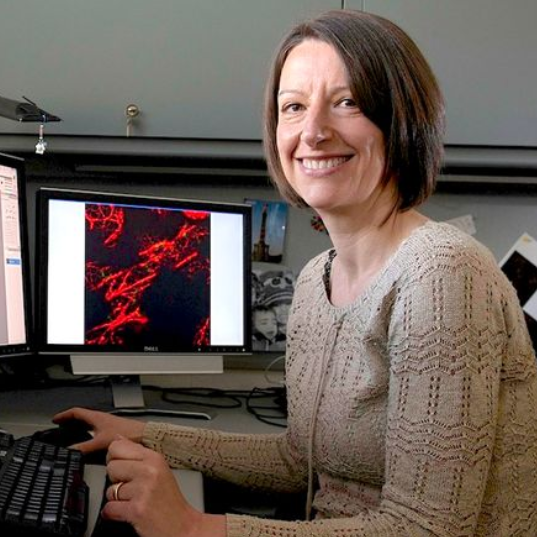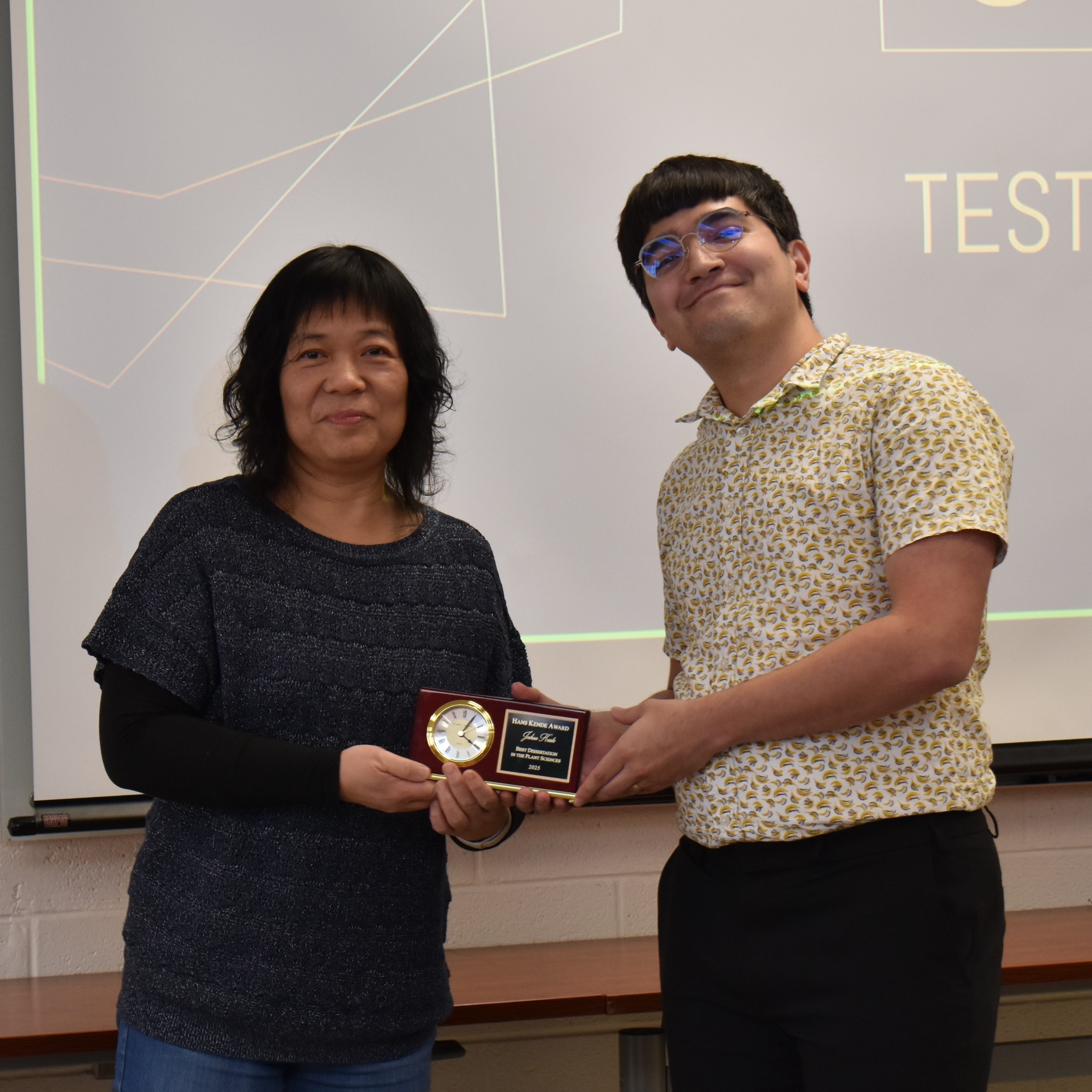News
February 23, 2022
As the planet experiences the effects of climate change, questions arise about the future of our planet and daily life in general. Many of the major challenges related to a changing climate and their impact on society have Michigan State University Spartans working on solutions.
February 17, 2022
Researchers from the Benning lab at the MSU-DOE Plant Research Laboratory have been looking into the signals for activating different states of the cell cycle in microalga, which has potential applications for future biofuel production and cancer research.
February 11, 2022
Christoph Benning, director of the MSU-DOE Plant Research Laboratory (PRL), was elected a Senior Member of the National Academy of Inventors (NAI). He is among 83 academic inventors to be elected to the group in 2022.
February 3, 2022
Sean Weise, research assistant professor in the Sharkey lab at the MSU-DOE Plant Research Laboratory (PRL), is moving to the Department of Biochemistry and Molecular Biology to build and teach a new undergraduate class.
January 31, 2022
Whole-molecule carbon isotope ratios (13C/12C) enable assessments of plant carbon uptake yet conceal information about carbon allocation.
January 25, 2022
It’s estimated that by 2050, the global population could reach 9 billion. With limited natural resources, feeding, clothing and providing materials to support that many people will be challenging. In Federica Brandizzi’s lab at Michigan State University, she and her colleagues are finding ways to make plants part of the solution.
January 24, 2022
James Santiago, postdoc in the Sharkey lab at the MSU-DOE Plant Research Laboratory (PRL) has accepted a new position as a R&D plant physiologist at Soli Organic, a culinary herb company based in Harrisonburg, Virginia.
January 12, 2022
MSU scientists have developed a new gene discovery method that is helping them to understand how plants recover from stressful situations in their environments.
January 11, 2022
Professor Jianping Hu has been appointed as the new director of the Molecular Plant Sciences (MPS) Graduate Program at Michigan State University.
December 22, 2021
A structure that helps algae photosynthesize when carbon dioxide levels are low may also play a role during hyperoxia conditions.
December 22, 2021
A new study from the MSU-DOE Plant Research Laboratory (PRL) shows how some algae can protect themselves when the oxygen they produce impairs their photosynthetic activity. The discovery also answers a long-standing question about how algae survive when CO2 levels are low.
December 15, 2021
Using innovative methodologies that combine biology and statistics, researchers from the Kramer lab at the MSU-DOE Plant Research Laboratory (PRL) observe the ways plants respond to their natural environments.
December 14, 2021
Three Michigan State University College of Natural Science (NatSci) researchers are among nine MSU faculty members recognized in the 2021 Highly Cited Researchers list, an annual compilation of the global leaders in scientific influence by Clarivate Analytics.
December 8, 2021
Jingcheng Huang is the 2021 recipient of the Kende Award, which acknowledges the best doctoral dissertation in plant sciences at Michigan State University (MSU) over the last two years.
December 7, 2021
An international team of scientists, including Michigan State University researchers, believe they may have found a molecular mechanism behind the extremely rare blood clots linked to adenovirus COVID-19 vaccines.
December 3, 2021
Improving the photosynthetic power-plants in crops could mean using less fossil fuel derived energy supplements in crop cultivation and lead to a second Green Revolution, a new life-cycle assessment (LCA) from the Walker lab at the MSU-DOE Plant Research Laboratory (PRL), finds.
November 16, 2021
Eleven Michigan State University researchers have been recognized in the 2021 Highly Cited Researchers List compiled by Clarivate Analytics.
November 2, 2021
For the first time in two years, the MSU-DOE Plant Research Laboratory (PRL) community gathered to share the exciting research conducted by the different groups at the 2021 PRL Retreat.
October 20, 2021
Researchers are integrating their work into undergraduate cell and molecular biology laboratory courses at Michigan State University through the use of Arabidopsis mutant screenings.
October 6, 2021
Guiding undergraduates pursuing STEM degrees has been a hallmark of the Michigan State University College of Natural Science (NatSci), with numerous faculty and graduate students recognized yearly for their significant contributions to undergraduate education through mentoring and guidance.
September 30, 2021
MSU-DOE Plant Research Laboratory (PRL) scientists have published a new study that furthers our understanding of how plants make membranes in chloroplasts, the photosynthesis powerhouse.
September 22, 2021
James Santiago, a postdoc in Tom Sharkey’s lab was awarded an internal grant of $88,000 from the PRI for research on heat-sensitivity in tomato anthers and pollen grains using single cell RNA-sequencing.
September 22, 2021
MSU plant molecular biologist Michael Thomashow’s research has always been fueled by a pretty simple question: How the heck does that work?
September 14, 2021
Two undergraduate students from Dr. Josh Vermaas’s lab have been awarded funding for their computational research this fall.
September 7, 2021
The Molecular Plant Sciences Monday seminar series is kicking off the 2021-2022 school year with presentations by plant scientists from institutions all over the world.
September 1, 2021
Dr. Anne Rea, former postdoc in Jianping Hu’s lab at the MSU-DOE Plant Research Laboratory, accepted a position as assistant professor of cell biology at Maryville College in Tennessee.
August 18, 2021
My name is Kara Headley, and I am the new communications manager for the DOE-MSU Plant Research Laboratory and the Molecular Plant Sciences program. I am very much looking forward to diving into this role and this community.
July 6, 2021
Four Michigan State University College of Natural Science faculty members – Federica Brandizzi, Joseph S. Krajcik, Robert L. Last, and Kenneth M. Merz, were among 11 MSU faculty members named University Distinguished Professors this year by the MSU Board of Trustees in honor of their achievements in research, teaching and mentoring, and community engagement.
June 10, 2021
The Prize recognizes postdoctoral researchers’, “outstanding contributions to plant biology, based on initiative and originality of the research, productivity, and leadership.” In addition, Dr. Xu, a member of the Benning lab, has accepted a tenure-track assistant professorship at the University of Guelph in Canada.
May 20, 2021
A new AI system, called DeepLearnMOR, can identify organelles and classify hundreds of microscopy images in a matter of seconds and with an accuracy rate of over 97%. The study illustrates the potential of AI to significantly increase the scope, speed, and accuracy of screening tools in plant biology.
May 13, 2021
The study reports that the activity levels of the carbon metabolism protein, G6PDH, are related to decreased production of pollen in bean flowers. As global temperatures rise, some bean crops, including Michigan-grown varieties, might be more sensitive to higher heat levels.
May 12, 2021
Kaylie Barton, a recently graduated undergraduate student in the lab of Federica Brandizzi, has won first prize at the 2021 University Undergraduate Research and Arts Forum. Kaylie was recognized for her poster presentation in the Plant Sciences category.
May 3, 2021
Evan Angelos and Hainan Zhao were recognized during a ceremony which took place online on Monday, April 19, 2021. The Anton Lang Memorial Fund was established in honor of the founding director of the MSU-DOE Plant Research Laboratory, who passed away in 1996.
March 23, 2021
The NRT program at Michigan State University, funded by the National Science Foundation Research Traineeship program, trains doctoral students in applying computational data science approaches to solving problems in plant biology.
March 16, 2021
Berkley Walker is leading a new, nearly $1 million National Science Foundation grant effort to better understand photorespiration, a natural process that saps plants’ productivity.
March 9, 2021
Two metabolic pathways introduced into cyanobacteria increase its photosynthesis performance and provide partial protection from negative effects of excess light absorption.


